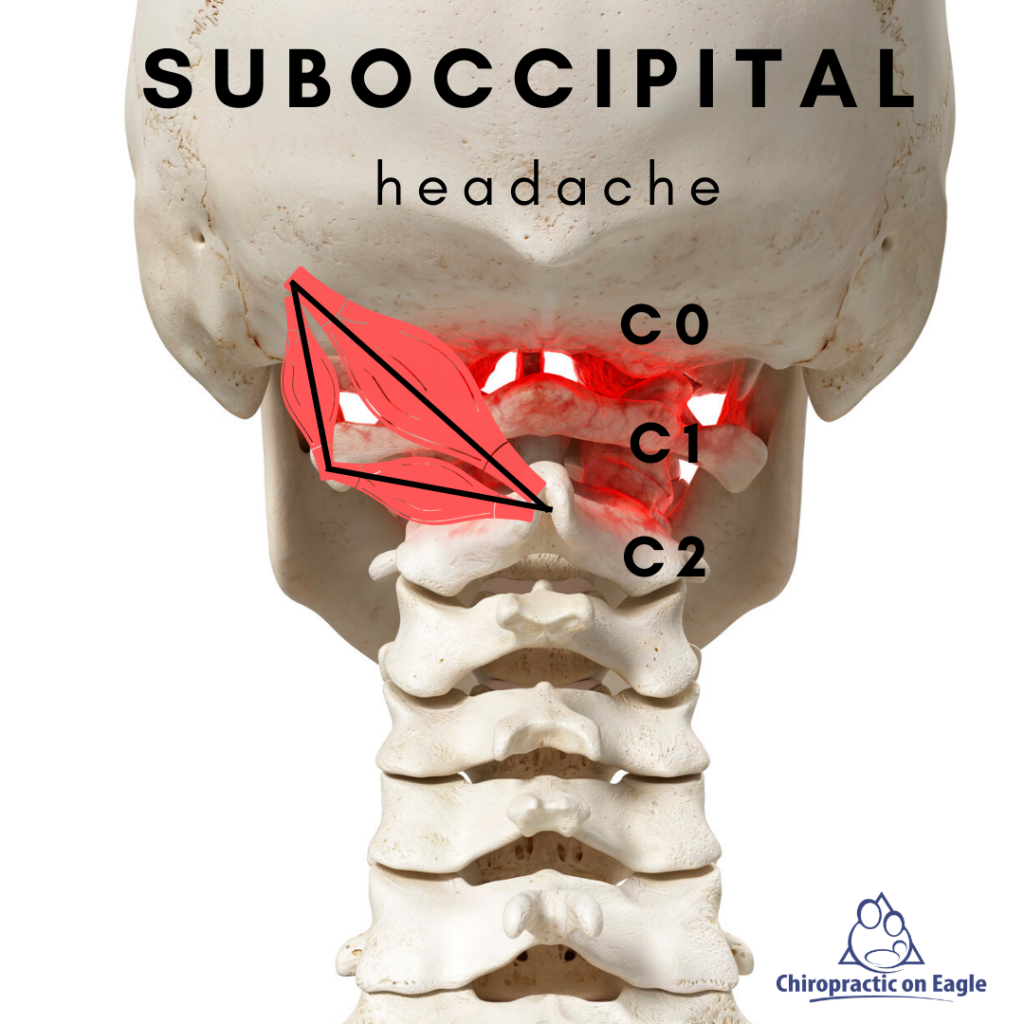Cervicogenic Headaches

I know headaches and migraines very well. In fact, I became a chiropractor because chiropractic helped me get rid of my headaches and migraines. Cervicogenic headaches are those that originate from the neck (cervical spine). There are many tissues in the neck that can refer pain to the head, hence the name cervicogenic headache.
There are many pain-sensitive tissues in the neck that can be a source of your headaches such as nerves, joint capsules, blood vessels, ligaments, and muscles. Specifically, the suboccipital muscles, 4 small muscles that sit at the top of the neck, just below the back of the skull (4 on each side), are a common source of pain. When the suboccipital muscles are the cause of a cervicogenic headache, we call it more specifically a ‘suboccipital headache’.
Symptoms of a ‘Suboccipital Headache’
Symptoms of a ‘suboccipital headache’ can vary from mild to severe, almost ‘migraine-like’. They are often on one side (can be both sides), originate in the upper neck and radiate from the back of the neck along the side/back of head to the forehead, and can even cause pain behind the eye(s). There are usually no visual symptoms like with a migraine. There can also be some associated dizziness occasionally. Finally, suboccipital headaches are sometimes difficult to distinguish from tension-type headaches as well.
Vertebrae C1 & C2
The top two cervical vertebra, the atlas (C1) and axis (C2), can be a sensitive area in the neck. A lot of movement occurs in this area – the occiput (base of skull), C1, and C2 is the area where most of the motion of your head occurs. Your head moves because the suboccipital muscles attach from the base of the skull (C0) to C1 and C2. If these bones are not moving well (due to poor posture/alignment, trauma, or stress) the suboccipital muscles can spasm and become inflamed. These muscles alone can be the cause of much pain. Also, in the immediate area of the C1/C2 vertebra are the greater occipital nerve, the lesser occipital nerve, the 3rd occipital nerve, the auricular nerve, and the occipital artery – all potential pain-causing tissues that should be evaluated to see if it is causing your headaches.
What Can You Do for Relief?
- Get your upper cervical spine (C0-C1-C2) evaluated by your chiropractor (x-rays, range of motion, muscular, neurological, and orthopedic testing can help determine the cause)
- Use either a cold pack, heat pack, or a combination of both in 15 minute on-off cycles
- Drink plenty of water and reduce caffeine and sugar
- Exercise regularly and try to reduce stress
- Try these 2 stretches below:
SUBSCRIBE to my YouTube channel HERE.
Cervicogenic headaches can be helped. Look to the upper neck for some answers – and solutions – it might just be what you need for some long overdue relief,

Chiropractic on Eagle
2:30 – 6:00 PMTuesday 7:30 – 10:45 AM
2:30 – 5:30 PMWednesday 2:30 – 6:00 PMThursday 7:30 – 10:45 AM
2:30 – 5:30 PMFriday ClosedSaturday ClosedSunday Closed
